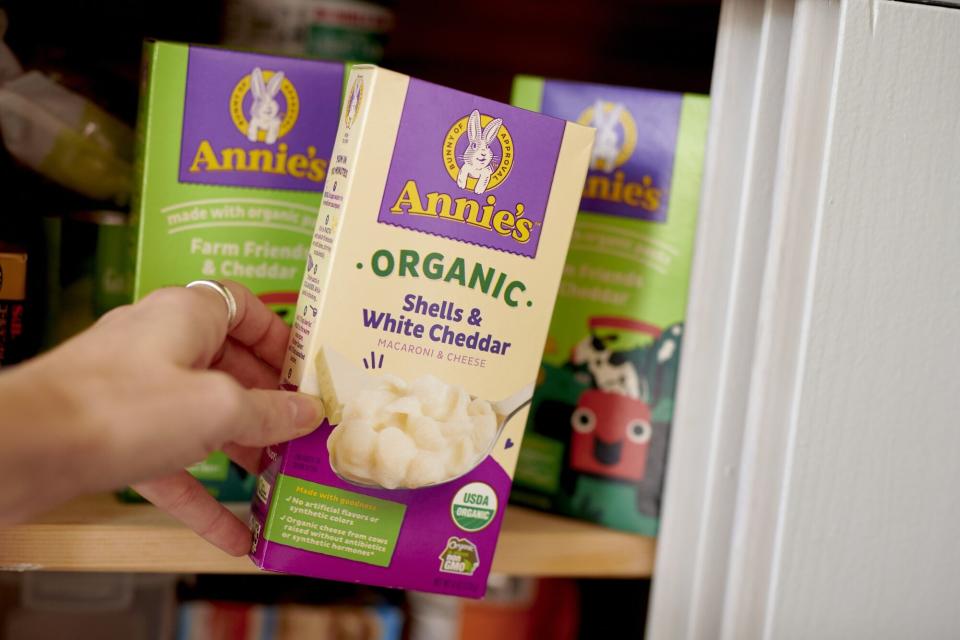Shrinkflation, AI and $1-a-Day Dog Food: The View From the CFO’s Office

(Bloomberg) -- After four years as chief financial officer of General Mills Inc., Kofi Bruce has grown accustomed to the unexpected.
Most Read from Bloomberg
Saudis Warned G-7 Over Russia Seizures With Debt Sale Threat
Modi’s Embrace of Putin Irks Biden Team Pushing Support for Kyiv
Archegos’ Bill Hwang Convicted of Fraud, Market Manipulation
NATO Singles Out China Over Its Support for Russia in Ukraine
“None of the events that have really transpired since I’ve been in the role have been scripted,” Bruce said in an interview for Bloomberg Chief Future Officer. “They don’t fit normal patterns.”
Shocks come with the territory if your tenure as CFO began in February 2020, just weeks before Covid swept through the US. Along with the health crisis and lockdowns came supply chain disruptions and a historic surge in inflation. Soaring grocery prices became a focus of consumer anxiety, with shoppers increasingly seeking value and market share eroding for name brands.
For Minneapolis-based General Mills and its packaged-food peers, this era has also been marked by consumer blowback over pricing, including the practice of so-called shrinkflation: effectively increasing prices by reducing product sizes. At the same time, CFOs are under pressure to keep higher expenses from eating into margins.
“If we do our job right and we’re driving productivity, that takes some of the sting out” of increasing corporate costs, said Bruce, 54, who joined the company in 2009. “But the other job is to make sure that if we’ve got consumers that are looking for value, that we’re hitting them with the right promotions and right incentives. As well as, we’ve got pack sizes to meet their price-point expectations. That’s a big part of the job.”
“Even on this inflated base, it costs four times less to eat a meal at home than it does to eat out,” Bruce added, noting that similar “trade-offs” exist across General Mills’ portfolio. “You can feed your pet Blue Buffalo pet food, our banner brand, for less than a dollar a day if you’ve got a medium-sized dog.”
In June, General Mills reported net sales of $19.9 billion for its most-recent fiscal year, a decline of approximately 1%, and said it foresees 2025 revenue as unchanged to up 1%. Growth should pick up in the long term as volumes rebound with moderating inflation, and on the strength of an expanding portfolio of pet products including Blue Buffalo, according to the company.
“In the US, pet feeding and treating is a $50 billion category,” Bruce said. “The humanization of pets is actually the biggest driver of pet food and pet treating growth. It has derivatives in not only feeding, which is the core thing that most households where most of the dollars go against the pet, but treating. And then you start to branch out to things like vitamins and minerals and supplements.”
Bloomberg Intelligence projects the global market for pet food and snacks will reach $146 billion by 2030, a 46% jump from 2023, buoyed by a surge in pet ownership during the pandemic. In addition to Blue Buffalo, General Mills has acquired several other pet-related businesses since 2018, most recently Belgian pet food brand Edgard & Cooper. Pet products made up 12% of sales in fiscal 2024.
Bruce is among the CFOs who have seen investments in AI and machine learning yield immediate returns and provide encouraging signs for the future. He credits ramped-up hiring of data scientists and development of predictive tools with increased efficiency, in areas from marketing and product innovation to supply chain and manufacturing.
“In manufacturing sites where we’ve employed these tools, we’ve seen a 20% to 30% reduction in waste,” he said. “It’s almost $20 million a year of reduction in waste just from these data tools.”
Most Read from Bloomberg Businessweek
Ukraine Is Fighting Russia With Toy Drones and Duct-Taped Bombs
At SpaceX, Elon Musk’s Own Brand of Cancel Culture Is Thriving
©2024 Bloomberg L.P.

 Yahoo Finance
Yahoo Finance 